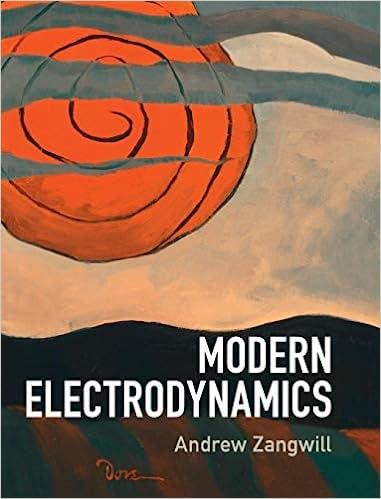(a) Place two charges +q at two diagonal corners of a square (a,a, 0) and two minus...
Question:
(a) Place two charges +q at two diagonal corners of a square (±a,±a, 0) and two minus charges −q at the two other diagonals of the square (±a,∓a, 0). Evaluate the primitive quadrupole moment components Qij = 1/2 ∫ rirjρ(r)dV and use the result to write down the asymptotic electrostatic potential in Cartesian coordinates.
(b) Write the primitive electric quadrupole tensor explicitly in the form Q = ˆeiQij ˆej, where ˆe1 = ˆx, ˆe2 = ˆy, ˆe3 = ˆz, and Qij are the corresponding matrix elements. Do not write down the vanishing components for the situation of part (a). The remaining parts of this problem exploit the fact that your formula is written in Cartesian coordinates, but gives a valid representation of the quadrupole tensor in any coordinate system.
(c) Express the Cartesian unit vectors ˆx, ˆy, ˆz in terms of the spherical polar unit vectors ˆr, ˆθ, ˆφ. Substituting these expressions into the expression for the quadrupole tensor you wrote down in part (b), determine all nine matrix elements of Q in spherical polar coordinates, i.e., Qrr , Qrθ , etc.
(d) Write down the expression for the corresponding electric potential in spherical polar coordinates (where now ˆe1 = ˆr, ˆe2 = ˆθ , ˆe3 = ˆΦ) without substituting the matrix elements of Q. Write down only the non-vanishing terms.
(e) Combining the results of parts (c) and (d), compute the electric potential and compare with the answer from part (a).
(f) Explain why you cannot begin in spherical coordinates and use the formula for Qij quoted in part (a) to reproduce the results of part (d).
Step by Step Answer:






